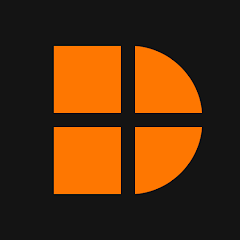When it comes to trading cryptocurrencies, choosing the right platform can significantly influence your trading experience, security, and profitability. Among the numerous options available, Deepcoin vs Binance stand out as two prominent exchanges that attract a broad user base. Both platforms boast unique features, fee structures, security protocols, and usability standards, making them worthy contenders in the crypto exchange landscape. This article aims to provide an extensive, detailed comparison of Deepcoin and Binance, helping traders make informed decisions based on their individual needs and trading goals.
Deepcoin vs Binance: A Comprehensive Comparison
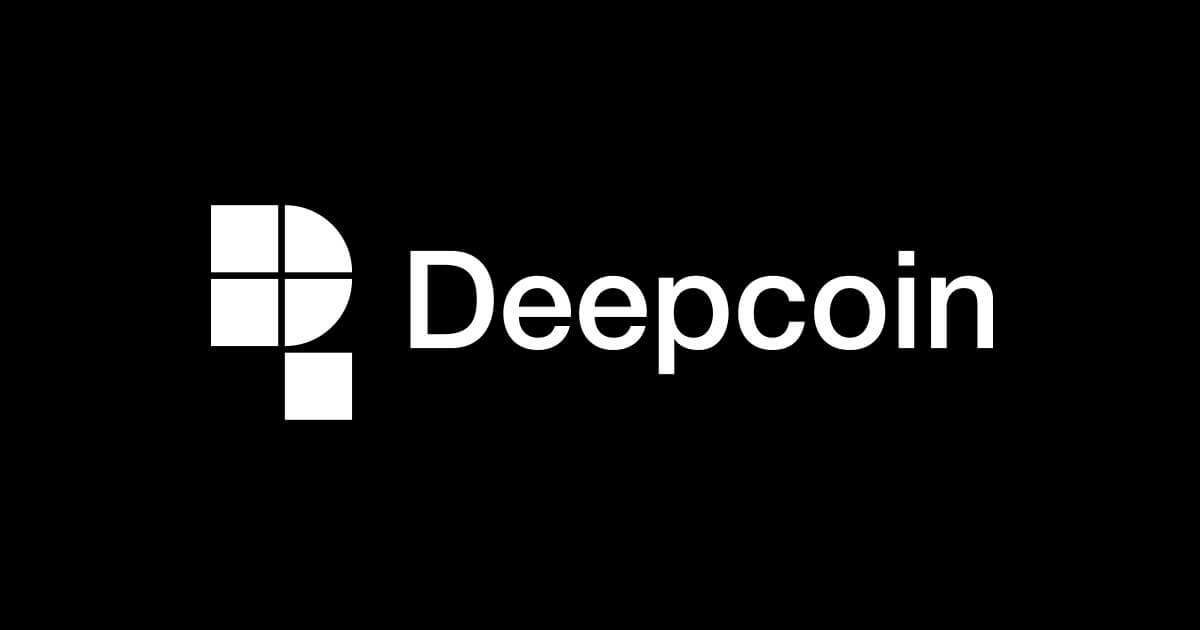
In the fiercely competitive world of crypto exchanges, understanding the core differences between Deepcoin and Binance is essential. While Binance has established itself as a global giant with a comprehensive suite of services, Deepcoin presents itself as a modern, innovative alternative tailored for specific trading niches. Analyzing their key attributes side by side sheds light on which platform aligns better with your trading style, security expectations, and investment objectives.
Before delving into detailed features, it’s important to recognize that each platform offers distinct advantages. Binance’s expansive market reach, liquidity, and extensive cryptocurrency offerings appeal to high-volume traders and institutional investors. Conversely, Deepcoin’s focus on user experience, innovative products, and competitive fee structure makes it attractive to newer traders and those seeking a streamlined interface. The ongoing evolution of both platforms underscores the importance of continual assessment, especially given the rapid changes in the crypto ecosystem.
Let us now explore the primary aspects that define these exchanges, starting from their key features.
Key Features of Deepcoin and Binance
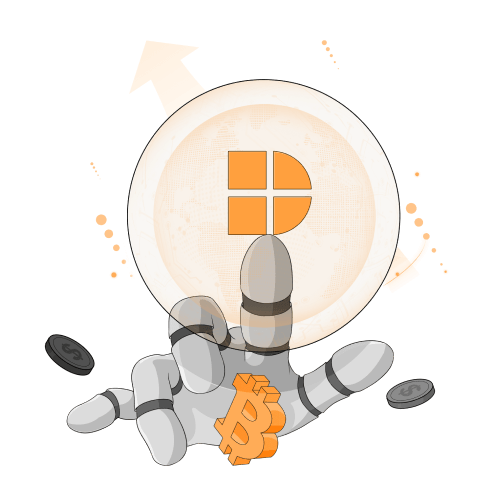
Understanding the foundational features of Deepcoin and Binance provides insight into their operational strengths and how they serve their respective user bases. From platform design and trading tools to additional services like staking and futures, the breadth of features influences the overall trading experience.
Platform Design and User Interface
Deepcoin: Deepcoin’s platform is designed with simplicity and efficiency in mind. Its clean, intuitive interface caters primarily to beginner and intermediate traders who prioritize ease of use. The layout emphasizes clarity, with straightforward navigation menus and minimal clutter, enabling users to execute trades swiftly without feeling overwhelmed.
The platform also incorporates modern UI elements such as customizable charts and quick access to popular coins. However, compared to Binance, Deepcoin’s interface might lack certain advanced charting functionalities or customized workspace options. This makes it suitable for traders seeking a user-friendly environment but potentially limiting for professional traders requiring complex analytical tools.
Binance: Binance’s user interface is renowned for its depth and flexibility. It caters to a wide spectrum of traders—from newcomers to seasoned professionals. The desktop version offers advanced charting tools with integrations like TradingView, multiple order types, and comprehensive market data displays. Its interface can be toggled between basic and advanced modes, allowing users to customize their trading dashboards extensively.
While this feature-rich design enhances analytical capabilities, it can initially seem overwhelming to novices. Nonetheless, Binance’s thoughtful layout ensures that experienced traders find all necessary tools at their fingertips, facilitating sophisticated trading strategies such as margin and derivatives trading.
Trading Tools and Analytical Features
Deepcoin: Deepcoin provides essential trading tools including spot trading, futures contracts, and staking options. Its analytical features include real-time price charts, order book visibility, and simple technical indicators. Although it may not offer extensive customization or deep technical analysis tools, it supports fundamental features required for effective trading.
An emerging feature is the integration of automated trading bots and API support, appealing to algorithmic traders. Deepcoin’s focus on innovation is evident in its efforts to introduce new trading functionalities regularly, though it still lags behind Binance in terms of sheer variety and depth of tools.
Binance: Binance excels in offering a vast array of trading tools suited for all levels of traders. Its charting platform includes multiple technical indicators, drawing tools, and custom settings. The exchange also provides futures, options, leveraged tokens, and margin trading, giving traders access to more complex financial instruments.
Moreover, Binance’s proprietary tools like Binance Earn, Launchpad, and Savings enable users to maximize earning potential beyond mere trading. The platform continuously updates its analytical features, integrating third-party tools and providing regular educational content, fostering a comprehensive ecosystem for active traders.
Unique Selling Points and Innovations
Deepcoin: Deepcoin’s primary allure lies in its innovative approach to user experience and product development. It actively explores decentralized finance (DeFi) integrations, cross-chain trading, and staking solutions aimed at enhancing user engagement and earning opportunities.
Its competitive edge is also rooted in its transparent fee structure, user-centric design, and commitment to security innovations such as multi-signature wallets and 2FA protocols. The company emphasizes building a community-oriented platform that adapts rapidly to market trends and user feedback.
Binance: Binance’s strength is its unrivaled global presence and diverse suite of services. From launchpads for new tokens to NFT marketplaces and fiat gateways, Binance continually expands its ecosystem. Its innovations include Binance Smart Chain (BSC), enabling fast and low-cost decentralized applications, and its Binance Card for seamless crypto payments.
Furthermore, Binance’s commitment to compliance, strategic partnerships, and educational initiatives contribute to its leadership position. Its ability to adapt swiftly and integrate cutting-edge blockchain technologies cements its reputation as an industry innovator.
Trading Fees: Deepcoin vs Binance
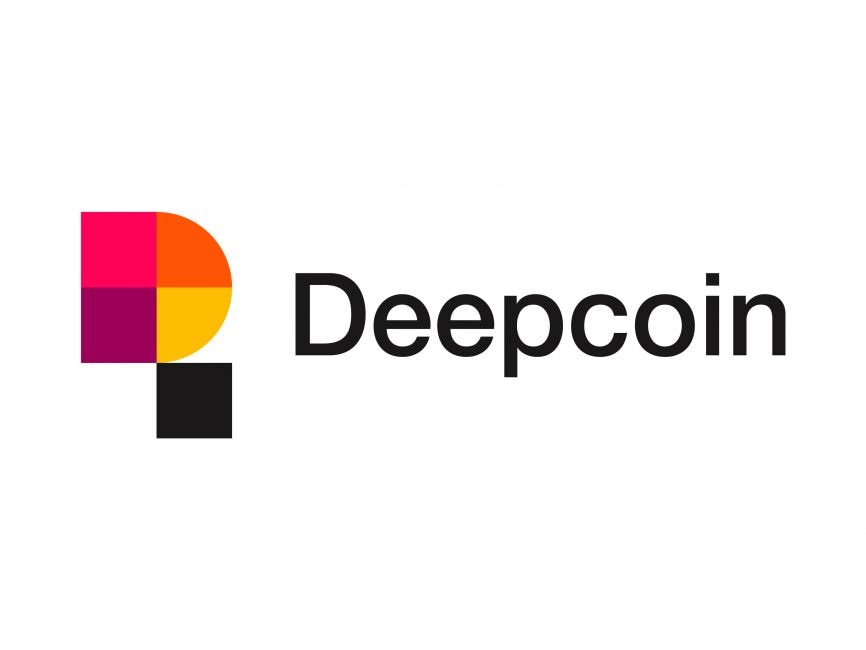
Fee structures directly impact profitability, especially for active traders. Comparing Deepcoin vs Binance necessitates a detailed look into their trading fees, deposit and withdrawal costs, and any other associated charges that could influence the overall cost-efficiency of trading on each platform.
Fee Structures and Cost Efficiency
Deepcoin: Deepcoin adopts a transparent, tiered fee model that rewards high-volume traders with reduced fees. Its spot trading fee typically starts around 0.10%, with discounts available for large traders or users holding its native token if applicable.
Futures trading fees are often slightly higher but remain competitive within the industry. Deposit fees are generally free, but withdrawal fees depend on the specific cryptocurrency, aligning with blockchain network costs. Deepcoin’s fee structure aims to strike a balance between affordability for retail traders and revenue sustainability for the platform.
Binance: Binance’s fee structure is widely recognized for its competitiveness. Its standard trading fee is 0.10% for both maker and taker orders. For users who hold Binance Coin (BNB) and choose to pay fees using BNB, a discount of up to 25% applies, reducing fees to approximately 0.075%.
Binance also offers VIP tiers based on trading volume, further lowering fees for high-volume traders. Withdrawal fees vary per cryptocurrency and tend to be relatively low compared to industry standards, thanks to Binance’s scale and efficient blockchain integrations.
Fee Reduction Strategies and Promotions
Deepcoin: To incentivize trading activity, Deepcoin frequently runs promotions such as zero-fee trading periods or cashback offers for specific trading pairs. Additionally, staking and participation in platform events sometimes grant fee rebates, fostering loyalty among active traders.
The platform also encourages the use of native tokens for fee discounts, aligning with broader industry strategies to build ecosystems and incentivize token holding.
Binance: Binance’s fee reduction mechanisms are among the most sophisticated. Traders can leverage BNB holdings, engage in VIP programs, or participate in special promotions to lower costs substantially. Binance’s “Referral Program” and trading competitions often include fee discounts and rewards, stimulating increased activity.
Furthermore, Binance’s global reach and economies of scale allow it to optimize transaction costs, passing savings onto users through competitive fee structures—making it one of the best platforms for cost-conscious traders.
User Experience: Navigating Deepcoin and Binance
A platform’s ease of use profoundly affects trader satisfaction and retention. As such, assessing the user experience involves exploring onboarding processes, navigation, customization options, and overall functionality.
Account Creation and Onboarding Process
Deepcoin: Creating an account on Deepcoin is straightforward, requiring basic identity verification depending on jurisdiction. The onboarding process emphasizes speed and simplicity, allowing users to start trading swiftly after completing KYC (Know Your Customer) procedures.
Deepcoin’s onboarding interface guides new users through platform features, ensuring they understand the available tools and security measures. Its emphasis on security is reflected in multi-factor authentication options made accessible during registration.
Binance: Binance’s account setup is slightly more detailed due to its global compliance standards. New users go through a comprehensive KYC process, which can be expedited but often requires document submission and verification steps.
Once verified, users gain access to a robust onboarding tutorial, with optional guided tours highlighting trading features, security settings, and available resources. Binance’s multi-layered onboarding caters to a diverse user base, from beginners to experts.
Ease of Navigation and Interface Customization
Deepcoin: Deepcoin’s interface prioritizes clarity. Navigation menus are logically structured, allowing users to switch between spot trading, futures, staking, and other services effortlessly.
Customization options are somewhat limited but sufficient for casual and intermediate traders. The platform’s responsiveness across different devices enhances usability, especially for mobile users seeking quick trades on the go.
Binance: Binance’s interface shines in its versatility. Users can toggle between “Basic” and “Advanced” views, tailoring their experience according to expertise level. The platform supports multiple workspace configurations, widget placements, and personalized shortcuts.
Despite its complexity, Binance manages to maintain an intuitive flow—especially once users familiarize themselves with its layout. Its adaptive design ensures that both novice and professional traders can navigate efficiently, accessing analytical tools, order placement, and account management seamlessly.
Security Measures in Deepcoin and Binance
Security is paramount in crypto trading, where threats include hacking, phishing, and internal breaches. Examining the security protocols adopted by Deepcoin vs Binance reveals their commitment to safeguarding user assets and data.
Security Protocols and Safeguards
Deepcoin: Deepcoin employs industry-standard security measures including SSL encryption, cold storage of assets, and multi-factor authentication (MFA). Its platform emphasizes transparency in security protocols and undergoes periodic audits to ensure robustness.
Additionally, Deepcoin implements withdrawal whitelist features, automatic logout systems, and real-time monitoring to detect suspicious activities. Its dedicated security team stays vigilant against emerging threats, updating protocols accordingly.
Binance: Binance has invested heavily in security infrastructure, adopting advanced techniques like SAFU (Secure Asset Fund for Users) insurance fund, cold and hot wallet segregation, and biometric authentication options.
The platform also enforces strict KYC policies, device management, and IP whitelisting. Binance’s security team conducts regular security audits and bug bounty programs, incentivizing external researchers to identify vulnerabilities proactively.
Incident Response and User Protection Policies
Deepcoin: In case of security incidents, Deepcoin maintains clear communication channels and prompt response protocols. Users are encouraged to activate multiple layers of security and monitor their accounts regularly.
The platform offers insurance coverage against certain types of losses, although its scope is narrower compared to Binance. Education on phishing prevention and account hygiene remains a key component of its user protection strategy.
Binance: Binance’s incident response system is comprehensive, featuring 24/7 customer support, rapid freezing of compromised accounts, and recovery procedures. Its insurance fund provides a safety net for users affected by security breaches.
Binance also emphasizes user education through tutorials, alerts, and phishing warning campaigns, empowering users to recognize and avoid scams. The scale of Binance’s security operations exemplifies its dedication to maintaining a trusted environment.
Supported Cryptocurrencies: Deepcoin vs Binance
The range of supported cryptocurrencies influences trading diversity and investment possibilities. Traders favor platforms that list a broad spectrum of tokens, including newer projects, stablecoins, and popular altcoins.
Range of Listings and Selection
Deepcoin: Deepcoin offers a curated selection of cryptocurrencies, focusing on high-liquidity coins and promising DeFi tokens. Its listing process combines community feedback, project credibility, and market demand.
While it might not match Binance’s extensive catalog, Deepcoin provides ample options in key sectors such as Bitcoin, Ethereum, stablecoins, and notable altcoins. Its selective listing policy aims to ensure quality over quantity, reducing risks associated with scam projects.
Binance: Binance boasts one of the largest varieties of cryptocurrencies globally. Its listing includes thousands of tokens, ranging from well-established coins to nascent projects via its Launchpad platform. This extensive selection enables traders to diversify portfolios easily and participate in early-stage opportunities.
Binance’s support for various blockchain assets, NFTs, and wrapped tokens underscores its commitment to being a comprehensive ecosystem. The rapid addition of new tokens reflects its agility in responding to industry trends.
Support for DeFi and Emerging Projects
Deepcoin: Deepcoin actively integrates DeFi tokens and emerging projects, often collaborating with innovative blockchain startups. Its focus on cross-chain compatibility and staking solutions allows users to access a broader array of digital assets.
The platform encourages participation in new DeFi initiatives through dedicated sections and promotional campaigns, fostering growth and diversification.
Binance: Binance leads in supporting DeFi and innovative blockchain projects through Binance Smart Chain (BSC) and other initiatives. Its Launchpad hosts numerous successful IDO (Initial DEX Offering) projects, providing access to early-stage tokens for users.
Binance’s extensive DeFi ecosystem, coupled with NFT marketplaces and liquidity pools, offers traders a multifaceted environment to explore emerging trends, making it highly attractive for risk-tolerant investors.
Customer Support: Which is Better, Deepcoin or Binance?
Effective customer support builds trust and ensures smooth trading experiences. Evaluating their support channels, responsiveness, and resolution efficacy highlights how each platform prioritizes user satisfaction.
Support Channels and Accessibility
Deepcoin: Deepcoin provides support via email, live chat, and an extensive FAQ section. Its live chat feature is responsive, often providing immediate assistance during peak hours.
The platform also maintains active social media profiles and community forums, where users can seek guidance and share experiences. However, international availability varies, and some regions report delays in support responses.
Binance: Binance’s customer support system is robust, with multiple channels including ticket-based support, live chat, email, and a help center filled with detailed tutorials. Its multilingual support facilitates user engagement worldwide.
Despite its large support team, Binance occasionally faces criticism for slow response times during high traffic periods, especially during major outages or security incidents. Nonetheless, its reputation for resolving issues effectively and consistently earns user trust.
Quality of Support and Issue Resolution
Deepcoin: Users generally appreciate Deepcoin’s personalized support approach, citing quick resolutions for common issues like login problems or transaction queries. The platform’s proactive communication during maintenance or updates also enhances user confidence.
However, more complex issues sometimes require escalation, leading to longer wait times. Continuous improvements in support workflows are vital for maintaining high satisfaction levels.
Binance: Binance’s support quality varies depending on the issue’s complexity and support queue length. Its extensive knowledge base alleviates many common concerns, reducing the need for direct contact. When direct support is needed, response times can be commendable, especially for premium VIP users.
Binance invests heavily in training support staff and refining workflows, yet the sheer volume of users poses ongoing challenges in maintaining uniformly high support quality.
Mobile App Experience: Deepcoin vs Binance
With increasing reliance on mobile devices, a seamless app experience is crucial. A platform’s mobile app must combine functionality, stability, security, and user-friendliness to satisfy the on-the-go trader.
App Functionality and Features
Deepcoin: Deepcoin’s mobile app delivers core trading functions, including spot and futures trading, account management, and staking. Its interface mirrors the web platform’s simplicity, emphasizing quick trade execution and easy navigation.
The app includes push notifications for order updates and security alerts, enhancing real-time management. While it covers essential features, advanced analytical tools are somewhat limited compared to the web version.
Binance: Binance’s mobile app offers a near-complete replica of its desktop platform. It supports spot trading, futures, margin, staking, savings, and even Binance Pay for crypto payments.
The app’s interface is highly customizable, with quick access to favorite markets and analytical tools. Its integrated news feed, price alerts, and educational content make it an invaluable tool for active traders and enthusiasts.
Performance, Stability, and Security on Mobile
Deepcoin: Deepcoin’s app is optimized for performance, with smooth navigation and minimal lag. Security features like biometric authentication and automatic logout bolster account safety.
Updates are frequent, addressing bugs and optimizing performance. However, some users report occasional crashes during high-volume trading times, an area for continuous improvement.
Binance: Binance’s mobile app is highly stable and performs reliably under various network conditions. Its security features include biometric login, anti-phishing codes, and device management.
The app’s scalability supports millions of users simultaneously, with proactive updates ensuring stability and security. Its comprehensive notification system keeps traders informed in dynamic markets.
Liquidity Analysis: Deepcoin Compared to Binance
Liquidity is a critical factor influencing trading efficiency, price stability, and order execution. High liquidity ensures that large trades can be executed without significant slippage, an essential aspect for institutional and high-volume traders.
Market Depth and Trading Volume
Deepcoin: Deepcoin demonstrates solid liquidity in major trading pairs like BTC/USD and ETH/USD, supported by active market makers and liquidity providers. Its daily trading volume is growing steadily, albeit still behind industry giants.
Market depth charts reveal tight bid-ask spreads for top cryptocurrencies, indicating efficient matching engines. Nevertheless, less popular altcoins may experience wider spreads and lower liquidity, affecting trading precision.
Binance: Binance commands unparalleled liquidity across a broad spectrum of cryptocurrencies. Its daily trading volume exceeds that of most competitors, providing robust market depth even during volatile periods.
Order books are deep, with minimal slippage for large transactions. This liquidity advantage attracts professional traders, arbitrageurs, and institutions seeking optimal execution conditions.
Impact on Trading Strategies
Deepcoin: Lower liquidity in niche markets means traders should exercise caution with large orders, using limit orders and monitoring spreads closely. For mainstream tokens, liquidity supports executing strategies such as arbitrage, scalping, or swing trading efficiently.
Deepcoin’s growing liquidity pool suggests increasing confidence among traders, but traders should assess individual trading pairs’ depth before deploying sizable capital.
Binance: The immense liquidity on Binance provides a significant advantage for executing large or complex strategies without impacting prices adversely. Its deep order books facilitate high-frequency trading, options hedging, and market-making activities.
Additionally, Binance’s liquidity advantages contribute to its resilience during market downturns, maintaining tighter spreads and consistent pricing, benefits that are crucial for serious traders.
## Conclusion
In the ongoing battle of Deepcoin vs Binance, both platforms offer compelling features tailored to different segments of the crypto trading community. Binance’s dominance in liquidity, extensive pairing options, and advanced analytical tools make it ideal for seasoned traders and institutional participants. Meanwhile, Deepcoin’s user-friendly design, innovative features, and competitive fee structure appeal to newcomers, smaller traders, and those seeking simplicity combined with modern DeFi integrations. Ultimately, your choice hinges on your trading volume, desired features, security preferences, and investment horizon. Both exchanges demonstrate strong commitments to security and innovation, but Binance’s extensive ecosystem and liquidity likely give it a slight edge for high-stakes trading. Nevertheless, Deepcoin continues to grow rapidly, positioning itself as an agile alternative worth considering for traders prioritizing ease of use and emerging crypto opportunities. Making an informed decision between Deepcoin vs Binance involves weighing these nuanced differences carefully in line with your personal trading ambitions.
